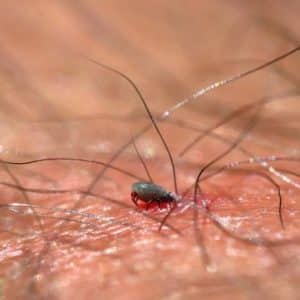Is It A Lyme Disease Rash?

The Lyme Disease Rash
First, it’s important to know that the tick bite itself can produce a local rash that is not evidence of Lyme Disease. If you develop a rash at the bite site minutes to hours after discovering and removing the tick, and if it disappears after a couple of days, then this is not the Erythema Migrans rash of Lyme Disease. (This is good news, but you still need to be on the lookout for Lyme Disease.)
Bull’s Eye Rash
According to the CDC, an Erythema Migrans (EM) rash (most commonly referred to as the Bull’s Eye rash), occurs in about 69% of cases, though this varies widely by geographical location, age, gender, and study paper! Rash development likely depends largely on the health of your immune system and the strain or species of bacteria in the bite. (Ticks have a microbiome just like we do! They carry many bacteria and viruses that can cause illness in humans.)
The initial classic EM rash often develops at the bite site and grows to more than 5cm over the course of a few weeks. It can be helpful to draw a circle around your rash and monitor its growth for a few days. It’s generally not painful, not itchy, and often resolves slowly over 2 months.
The EM rash is sometimes called a Bull’s Eye rash because the tiny red bump from the bite expands and then clears in the centre, forming what looks like a target. However, many EM rashes do not look like a bull’s eye and can take on many forms, including patches that are smooth and homogenous, or crusted in the centre, or filled with little vesicles (sort of like shingles spots) at the periphery. The colour can also vary from very light red to purple.
Multiple Rashes
The initial Lyme Disease rash is often a single rash around the bite site. However, if you were unaware of the tick bite, this initial rash may have gone unnoticed. Lyme Disease can progress to include multiple smaller rashes months later that could be misdiagnosed as another illness.
Treating a Lyme Rash
If your rash matches the EM rash description above, and you developed flu-like symptoms, you have Lyme Disease. Thank goodness you caught it early! Take careful note of the timeline of your bite and all symptoms, and seek treatment from your medical doctor. Antibiotics for 3 or more weeks is strongly recommended in most cases. Do not rely on blood testing to tell you whether you have Lyme Disease – Lyme Disease is a clinical diagnosis and our blood testing options are known for their errors. (There’s a time and place for Lyme Disease testing.)
Treating the Tick Bite
You’ve heard it from me before: Please treat every tick bite! Remove (and keep) the tick, clean the bite site with antiseptic, and apply a clay poultice for 12 or more hours to help draw out whatever might have been injected into your body through the tick salivary glands. Do this even if it was not a black-legged tick since all ticks carry risk of infection of some kind. Please also do this even if the tick isn’t engorged, since some infections can transfer from a tick to a person in only a few hours.
Be diligent with lifestyle factors that keep your immune system up and balanced! If your body needs a little bit of help, we have botanicals (such as Astragalus or Andrographis), or regular acupuncture sessions that can give your body some gentle support. (I design these regimes carefully for my patients according to where their body needs the most support. For many reasons, I’m unable to offer recommendations for people who are not my patients.)
Finally, it’s worth noting that taking a single dose of antibiotic within hours of a tick bite, is controversial. There’s some evidence that this single dose could be more harmful than helpful. Further, it doesn’t replace the benefit of a healthy immune system.
For more information about tick bites and Lyme Disease, please review some of our guidelines and resources, here.
*Photo by Emphyrio on Pixabay.